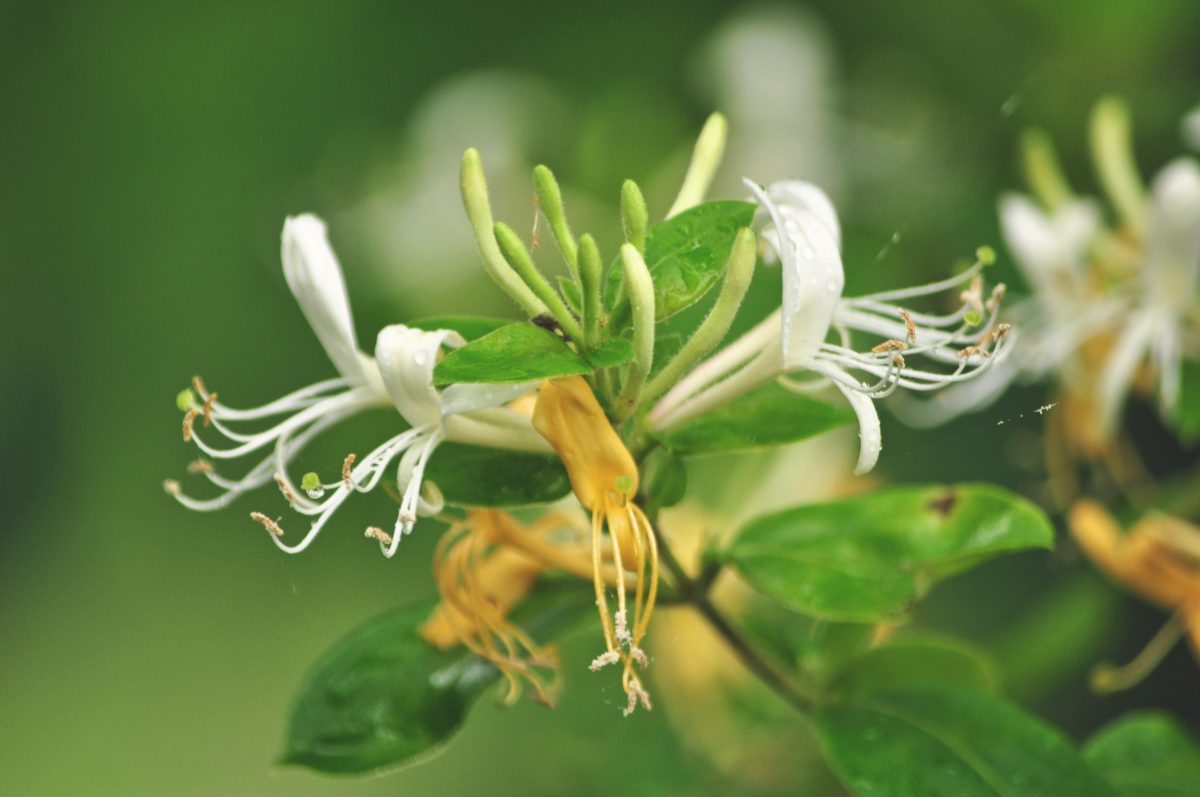Every April, the thin, white and light-yellow flowers begin to bloom in pairs, creating a dense thicket of vines. Emitting that sweet smell that so many who grew up in the eastern half of the United States have come to associate with not just the arrival of spring, but also a ritual of childhood.
With no skill or technique required and no shortage of the plant, consuming the sweet nectar from the inside of a Honeysuckle flower was uncomplicated and entertaining. But its place in many people’s memory as well as its regularity in nature contribute to a false notion of the plant’s place in America.
Most species of honeysuckle are not native to the U.S., and some, like Japanese honeysuckle, cause great harm to many native plant species.
Japanese honeysuckle was used as an “ornamental plant, for erosion control, and for wildlife forage and cover.”
Brought from East Asia to the U.S. in the early 1800s, Japanese honeysuckle (Lonicera japonica) was used as an “ornamental plant, for erosion control, and for wildlife forage and cover,” according to a fact sheet published by the Invasive Plant Species Assessment Working Group (IPSAWG) in the Indiana Department of Natural Resources. Many birds eat the berries produced by the plant, which has led to further growth. Currently, the IPSAWG document goes on, “It … occurs throughout the eastern half of the United States, an area encompassing 26 states,” damaging forests and “out-competing native vegetation for light, below-ground resources, and by changing forest structure.”
As invasive and damaging as Japanese honeysuckle is, it is only one in at least several hundred plants that are quite literally taking over the country.
In a 2014 study, researchers found that in the U.S. invasive and alien plant species are more widely distributed than those that are native. They wrote of their findings: “Invasive plant distributions were consistently broader, both climatically and geographically, than comparable native species.”
Even those that aren’t as common were found extensively in the American landscape — tropical spiderwort, for example. According to the journal Science, “This aggressive weed was first identified as a problem in Florida in the 1990s and has already made it to California.”
Yet, unfortunately, there’s still room for growth.
People aid in the expansion of non-native species, planting ornamentals and using seed mixtures tainted with those of invasive species.
Researchers also compared species’ actual and potential distributions and determined how much of each plant’s potential range it was currently occupying. They discovered that the average invasive plant inhabited just 50 percent of its projected territory.
While non-native plants do often have advantages over natives, lead researcher on the study Bethany Bradley said that biology is not fully to blame for their spread. People also aid in their expansion, planting ornamentals and using seed mixtures tainted with those of invasive species.
Non-natives like Japanese honeysuckle can be managed by pulling up vines, conducting prescribed burning and, when options are limited, treating plants with a glyphosate herbicide.
For simple ways to preserve native plants and curb the spread of invasives, follow these simple steps from IPSAWG:
- Request only non-invasive species when buying plants and seeds.
- Seek out information about non-natives and help educate others.
- Scout for and remove invasives from your property.
- Clean shoes after visits to natural areas to prevent the spread of seeds.
- Support policies and programs that seek to limit invasive species.





